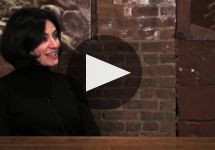Paolo Scavino Barolo Bric del Fiasc 1999
-
Robert
Parker -
Wine
Enthusiast -
Wine
Spectator



Product Details
Your Rating
Somm Note
Winemaker Notes
-Wine Advocate
Professional Ratings
- Robert Parker's Wine Advocate
-
Wine Enthusiast
Slightly herbal or minty on the nose, but the palate is all that we've come to expect from Scavino, with wonderfully pure red fruits and subtle notes of mineral and sous bois for complexity. Tar and dark chocolate wrap up the supple finish. Drink 2005–2020.
-
Wine Spectator
This has blackberry and strawberry tart aromas, with hints of flowers, including violet. Full-bodied, with soft, fine tannins, finishing with licorice, berry and fennel seed. Tasted from magnum.—'99 Piedmont blind retrospective (2009). Drink now through 2018. 875 cases made.
Other Vintages
2019-
Jeb
Dunnuck -
James
Suckling -
Robert
Parker
-
Wine
Spectator -
Robert
Parker -
Wine
Enthusiast -
James
Suckling
-
James
Suckling -
Robert
Parker -
Wine &
Spirits -
Jeb
Dunnuck -
Wine
Spectator
-
Robert
Parker -
Wine &
Spirits -
Wine
Enthusiast -
Wine
Spectator -
James
Suckling
-
James
Suckling -
Robert
Parker -
Wine
Spectator -
Wine
Enthusiast -
Wine &
Spirits
-
Wine
Enthusiast -
Wine &
Spirits -
Robert
Parker -
James
Suckling - Decanter
-
Wine
Spectator
-
Wine
Enthusiast -
Wine
Spectator -
Robert
Parker -
James
Suckling
-
Wine
Spectator -
Wine
Enthusiast -
James
Suckling -
Robert
Parker -
Wine &
Spirits
-
Wine
Enthusiast -
James
Suckling -
Wine
Spectator -
Robert
Parker
-
Wine
Spectator -
Robert
Parker -
James
Suckling
-
Robert
Parker -
James
Suckling
-
Robert
Parker -
Wine
Spectator -
James
Suckling
-
Robert
Parker -
James
Suckling -
Wine
Spectator
-
Robert
Parker -
Wine
Spectator
-
Wine
Spectator -
Robert
Parker
-
Robert
Parker -
Wine
Spectator
-
Wine
Spectator -
Robert
Parker
-
Wine
Spectator -
Robert
Parker
-
Robert
Parker -
Wine
Spectator
-
Robert
Parker





Paolo Scavino winery was founded in 1921 in Castiglione Falletto from Lorenzo Scavino and his son Paolo. Enrico Scavino together with the daughters Enrica and Elisa, fourth generation, run the family Estate. Through 70 years of work, Enrico Scavino has researched and purchased some of the most historic vineyards cultivated with Nebbiolo for Barolo to experience and show the uniqueness of each site.
The Scavino family owns 30 hectares entirely in the Barolo area and vinifies grapes from their own vineyards located in the villages of Castiglione Falletto, Barolo, La Morra, Novello, Serralunga d’Alba, Verduno, Roddi and Monforte d’Alba.
The approach to both viticulture and winemaking is scrupulous, respectful and is aimed at preserving and therefore enhancing the expression and peculiarities of each vineyard in the wines.
